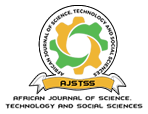Evaluation of sulfuric acid effect on bending strength of steel used in concrete reinforcement in sanitation structures
DOI:
https://doi.org/10.58506/ajstss.v2i2.207Keywords:
Bending Strength, Microbiologically Induced Deterioration, Sanitation Structures, Strength ReductionAbstract
Most sanitation structures in the world are constructed using concrete which is reinforced by the steel, this type of concrete is called Reinforced Cement Concrete (RCC). The RCC structure is believed to be relatively resistant to corrosion which the sanitation structures are prone to due to the aggressive environment in which they are subjected to. This belief has been compromised since the reinforced concrete used in the sanitation structures such as the concrete sewer pipes has become susceptible to Microbiologically Induced Deterioration (MID). This MID leads to degradation and compromised strength and service life of the RCC. In the reinforced concrete structure, the backbone of this structure is the reinforcing steel which when its strength is compromised by the MID, the whole structure is compromised. The present research therefore aimed at evaluating the effects of sulfuric acid, resulting from the MID process, on the bending strength of steel metal used for reinforcing concrete in sanitation structures. Reinforced concrete specimens were developed using different types of cement and different concrete cover. The three different types of cement were, Ordinary Portland Cement (OPC), Portland Pozzolana Cement (PPC) and Limestone Calcined Clay Cement (LC3), while concrete covers of 15mm and 25mm were applied. They were then subjected to a harsh environment (a sample of sewage) suitable for corrosion just like in their actual operational environment. To determine the effects of sulfuric acid resulting from MID on the steel metal, the steel metal was tested using a Universal Testing Machine (UTM). The bending strengths before and after being subjected to an aggressive environment were determined. The testing of the specimens was done at an interval of 14 days for a period of three (3) months. According to the results, for a concrete cover of 25mm, LC3 showed a minimum percentage reduction in strength compared to PPC and OPC. It had the lowest percentage reduction in strength after 84 days which was 5.25%, OPC 7.20%, and PPC 7.24%. In conclusion, there was a strength reduction for all specimens tested. LC3 showed good resistance to the effects of MID compared to PPC and OPC. In terms of concrete cover, 25mm showed good resistance to MID compared to 15mm concrete cover.


